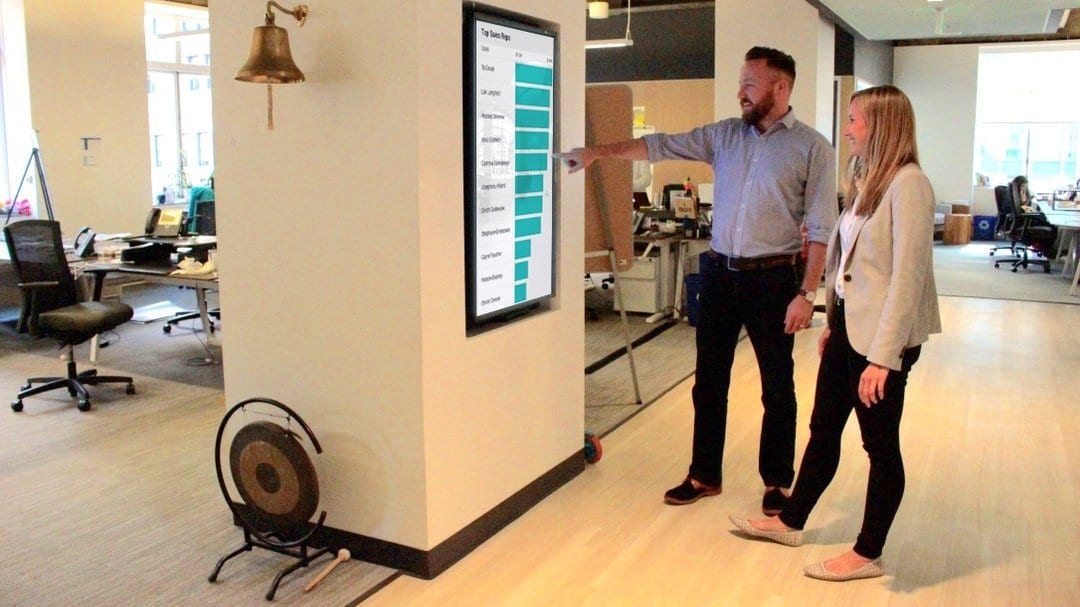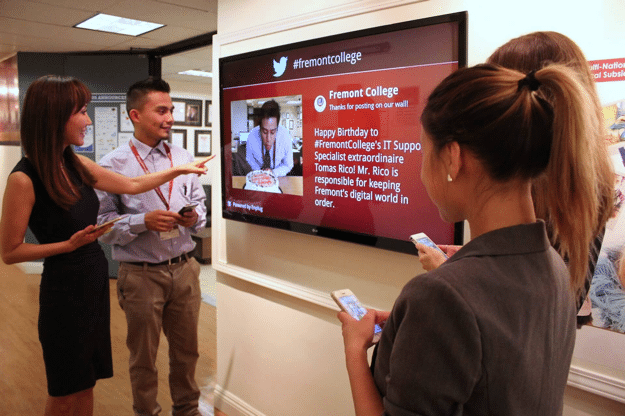Do you have an Internal Communications Plan?
Why Does It Matter?
It doesn’t matter if you’re the founder of a startup, Director of Culture for a mid-sized organization, or a manager for a Fortune 500 company, you should care deeply how you and your team communicate. The study and practice of communication within companies is called internal communications and it plays a critical role in boosting employee engagement. The guidelines in this article can help you to create an effective internal communications plan.
One study we looked at concluded that effective internal communications can elevate employee productivity by 25% or more, unlocking millions in value[i]. What would that mean for your organization?

Still on the fence over how much communication matters? We looked over the far-reaching effects of positive internal communications and put together these
7 Powerful Stats.
What’s important to keep in mind when creating your
Internal Communications Plan?
An internal communications plan simply put is a playbook your team can use to organize strategies, objectives and metrics.
The internal communications landscape is changing quickly in response to two significant trends:
- The Employee’s relationship with their work and workplace. There has already been significant industry conversation around trends like working from home, co-working spaces, creative and open office concepts and unlimited time off. While these ideas remain largely contested, they reflect a shift in how employees relate to their employer. Companies are outsourcing specialization more frequently, while employees are more mobile, adaptive and productive[ii].
- Changing technology means people connect in new ways. From Facebook to Salesforce, Periscope to Slack, employees are in near-constant digital communication with each other. Some of the most effective communication plans include the platforms that are already natural for their employees. Interesting and a bit obvious, the rise of internal social media usage (now over 50%[iii]) parallels the rise of social media use as a whole.

Managers should look for new channels to meet their communications objectives. This is an ever-changing and saturated landscape, but it doesn’t need to be complicated. Your team already knows the answers; you just need to ask the questions.
Here is our free Internal Communications Planning Template which you can use to structure your organization’s internal communication plan.
Internal Communications Channels by Popularity
No doubt, one of the biggest challenges when creating an internal communications plan is the evolving landscape of channels and platforms through which organizations and individuals can communicate. Here is a high-level overview of some of the primary channels and their respective usage percentages[iv].
- Email (99%): The absolute default choice for organizations of all sizes. 99% of internal communication teams use email for critical information[v]. Caution, this channel can easily become over-saturated with disjointed threads resulting in lower engagement and a loss in continuity.
- Face-to-Face Meetings (96%): For organizations of any size, this is as critical as oxygen.
- Intranet (90%): This isn’t your Grandfather’s Intranet anymore; a quick Google Image search will show you how crucial a tool this can be for sharing information and resources. From enterprise tools like SAP to the simply accessible Google Drive, many different organizations deploy some tool that fits into this Intranet category. Despite evolution to these options however, intranet usage is at an all-time low. Less than 13% of employees report using their intranet tools daily and worse, a third report never using them at all[vi].
- Social Media (85%): Already 4 years old, a 2014 study found that 85% of corporations are using social media as part of their internal communications plan[vii]. Social media use can help foster real-time, authentic conversations that may involve both employees and customers.
- Office Displays (80%): The content you display on the walls of your offices is a part of your communication strategy. More and more organizations are using digital posters and messages (such as the excellent ones from StartupVitamins) to help communicate corporate values and motivation. Digital signage is rapidly gaining acceptance for use within offices. In fact, this look shows half of communication and culture professionals use digital signage in their offices for employee recognition, performance metrics and building culture[viii].
- Internal Messaging: Every year new chat-based, task tools hit the market. Here at Openhwy we like to use Slack for much of our informal and collaborative team communication. With Slack teams can create task specific channels and communicate quickly via a chat format. It’s a powerful way to seek help, gather feedback, send office alerts and share successes.
While workplace digital signage may still be overlooked by some for internal communications, the right tech and the right strategy are proving an effective and powerfully engaging way to reach employees.
Openhwy’s display software is the simplest way to show internal social media, industry news, corporate metrics, important messages and alerts in your offices. To discover if we’re a good fit with your organization, ask us for a free demo.
sources:
[i] McKinsey 2012. The Social Economy: Unlocking value and productivity through social technologies
[ii] RAND 2004. The Future at Work — Trends and Implications
[iii] Towers Watson 2013. Just Over Half of Employers Using Social Media Tools for Internal Communication
[iv] MarketingProfs 2010. Email, Intranet Top Tools for Engaging Employees
[v] Newsweaver Report 2014: How Internal Communication uses email
[vi] Prescient Digital Media 2013. Social Intranet Study Report
[vii] Incite Group, 2014. How social media is now used in corporations, and Smart Insights, 2015. How is social media used for corporate communications?
[viii] Weber Shandwick 2012: Employees Rising: Seizing the Opportunity in Employee Activism.pdf
With thanks to our American partners, Enplug.
Openhwy digital signage software was founded by Kelsey Knutson in 2012 to provide organizations to use customized real-time and streaming content to create engaging external and internal communications and marketing.

About Openhwy Digital Signage Software
Openhwy digital signage makes it simple for businesses to create and share compelling visual content for their marketing and employee communications. Our software powers content on TVs Canada-wide with news feeds, social media walls, sports scores, employee recognitions, corporate KPIs, graphics and videos. Openhwy was founded in 2012 in Red Deer, Alberta.

